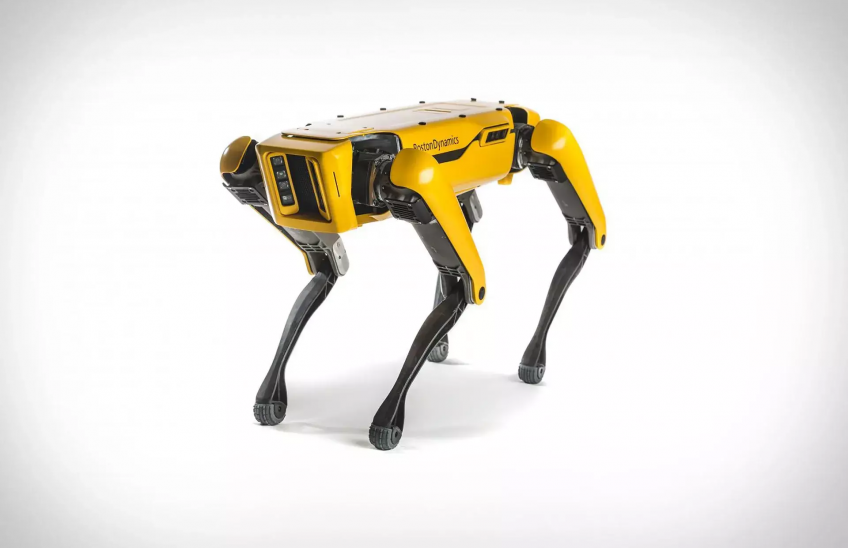One of the Electronic Systems Laboratory’s current areas of research is autonomous systems including autonomous vehicles, robots and drones. This involves developing vehicles that can function completely autonomously, and are self-directed, self-governed, and self-sufficient. In true South African style, practical research is conducted to solve real control system problems. Practical research in this context means testing the vehicles’ self-sufficiency when presented with real-life conditions such as weather variability or dirt roads with many obstacles and not only in a controlled laboratory environment.
The result: Independent robot vehicles that can determine – without a map or clearly-defined road – their location, the terrain they are operating on and how to navigate to the endpoint, autonomously.
Meet Spot®
No, this is not a robot pet. It is a four-legged robot capable of advanced autonomous navigation. Spot® is an agile mobile robot that can navigate terrain with unprecedented mobility, allowing the automation of routine inspection tasks and data capture safely, accurately, and frequently. In other words, Spot® can walk through an environment and decide how and where to move on its own.
Developed by Boston Dynamics in the US, Spot® takes part in a research project conducted by Dominic Roux, a Masters’s student in the Department of Electrical & Electronic Engineering, Stellenbosch University. He is using Spot® in conjunction with a machine-learning algorithm he created to perform certain inspections in an industrial environment. This research project is supervised by Prof Thinus Booysen and funded by Trevali Mining Company.
Imagine yourself exploring a cave in the mountains and getting trapped inside. Rescuers could approach you, but they are not sure if it is safe for them to go in themselves. In the cave, Spot® can take photos of the environment. Dominic’s algorithm can then analyse these photos, compile reports and help find solutions.
Watch the video below:





